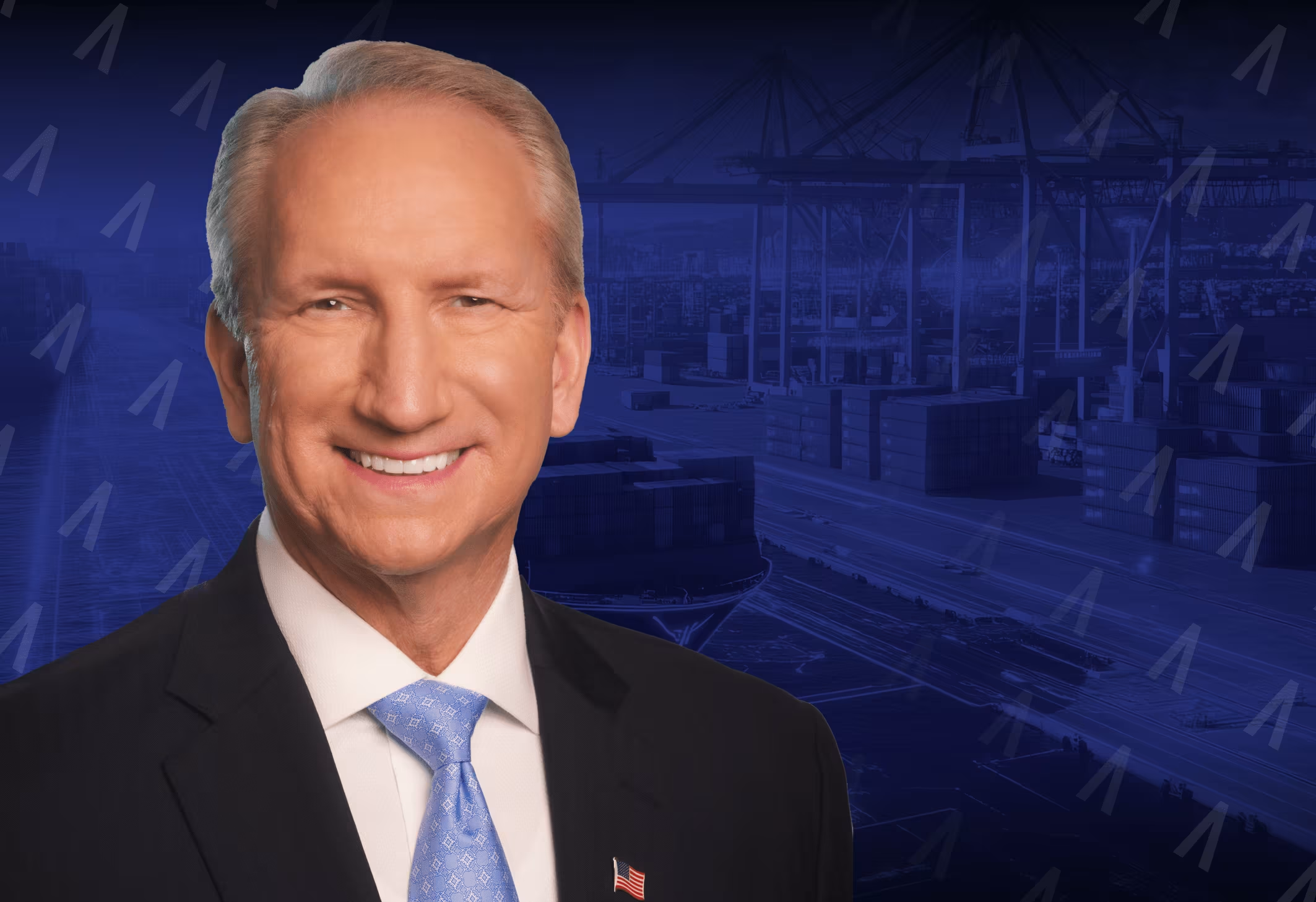Gene Seroka is personable—downright charming, actually—but his trademark diplomacy hit a wall in October 2021. As executive director of the Port of Los Angeles, Seroka had spent months at White House briefings and industry roundtables grappling with an unprecedented logjam: 109 ships anchored offshore in the Pacific, cargo containers stalled for weeks and the nation’s supply chain on the brink.
On October 25, he announced a controversial move: a $100 daily fine for any container sitting nine days or longer on port property. “I got some pretty mean phone calls, I got letters from attorneys, and I didn’t get invited to as many New Year’s Eve parties,” he jokes. But within two weeks, the number of “aging” containers dropped 20%. Within a month, it was down 35%.
From bottleneck to breakthrough
Seroka’s turning point didn’t come from yet another meeting, but from data. The port’s digital platform, the Port Optimizer™, uncovered a crucial insight: Once a container sat idle for eight days, it often remained for weeks. “We found that some companies were using the port as a de facto warehouse,” Seroka says.
This revelation marked the start of a broader transformation. Out of the historic crisis, the port emerged stronger: it now moves more cargo than it did during the COVID surge, in July posting its busiest single month in its 117-year history —and currently has zero ship backups.
The Port Optimizer also revealed a quiet inefficiency: Only 50% of daily truck appointment slots were being used. “It would be like a restaurant with 10 tables, five used at lunch and five at dinner,” Seroka explains. So he implemented a unified reservation system, replacing 12 separate terminal platforms, boosting utilization by 20% and driving appointment honoring rates to 96%.
Greener by design
Digital tools also power the port’s ambitious environmental agenda. The Port of Los Angeles has invested over $3 billion in zero-emissions technology, and in 2024—its second-highest cargo volume year—the port recorded its lowest pollution levels in two decades.
Still, full-scale electrification remains a challenge. “There’s a lot of uncertainty around electric truck pricing and charging infrastructure,” Seroka says. “You’ve got to move cargo, keep prices low for the American consumer and create jobs.” It’s a balancing act of speed, affordability and economic growth.
Strategic emissions, smart investment
Rather than try to electrify everything at once, Seroka focuses on return on impact. His rule: Invest where emissions cuts will be greatest.
Ships are the port’s top polluters. That’s why Los Angeles is leading the charge on marine fueling stations with synthetic and renewable fuels. In a milestone moment, a Maersk vessel recently completed the first zero-emissions Pacific crossing using e-methanol—produced with renewable energy and recycled CO2. But Seroka notes that e-methanol is still costly and in limited supply.
Trucks are the second-largest source of pollution. To address this, the port taps into electronic driver logbooks to track traffic patterns and rest stops—then locates charging and fueling infrastructure in the most critical corridors.
Rail offers another opportunity. With only two locomotive manufacturers in the U.S., Seroka sees room to disrupt the market and drive cleaner tech. “My return-on-investment calculation is simple: What dollars reduce the most remaining pollution?”
When human judgment meets artificial intelligence
Looking ahead, Seroka believes predictive analytics will be transformative—not by replacing institutional knowledge, but by augmenting it.
“The computer works faster than the mind,” he says. “But institutional knowledge adds depth to that speed.”
Imagine a ship arrives late. AI can instantly recommend gate extensions, surge workforce shifts or deploy additional trains. But Seroka sees the real power in the blend. “The system might say ‘Use three locomotives,’” he explains. “But the guy who’s worked the docks for 40 years says, ‘No, you need four.’ That’s where the magic happens—that human interaction with the computer.”


.avif)
.avif)
.avif)